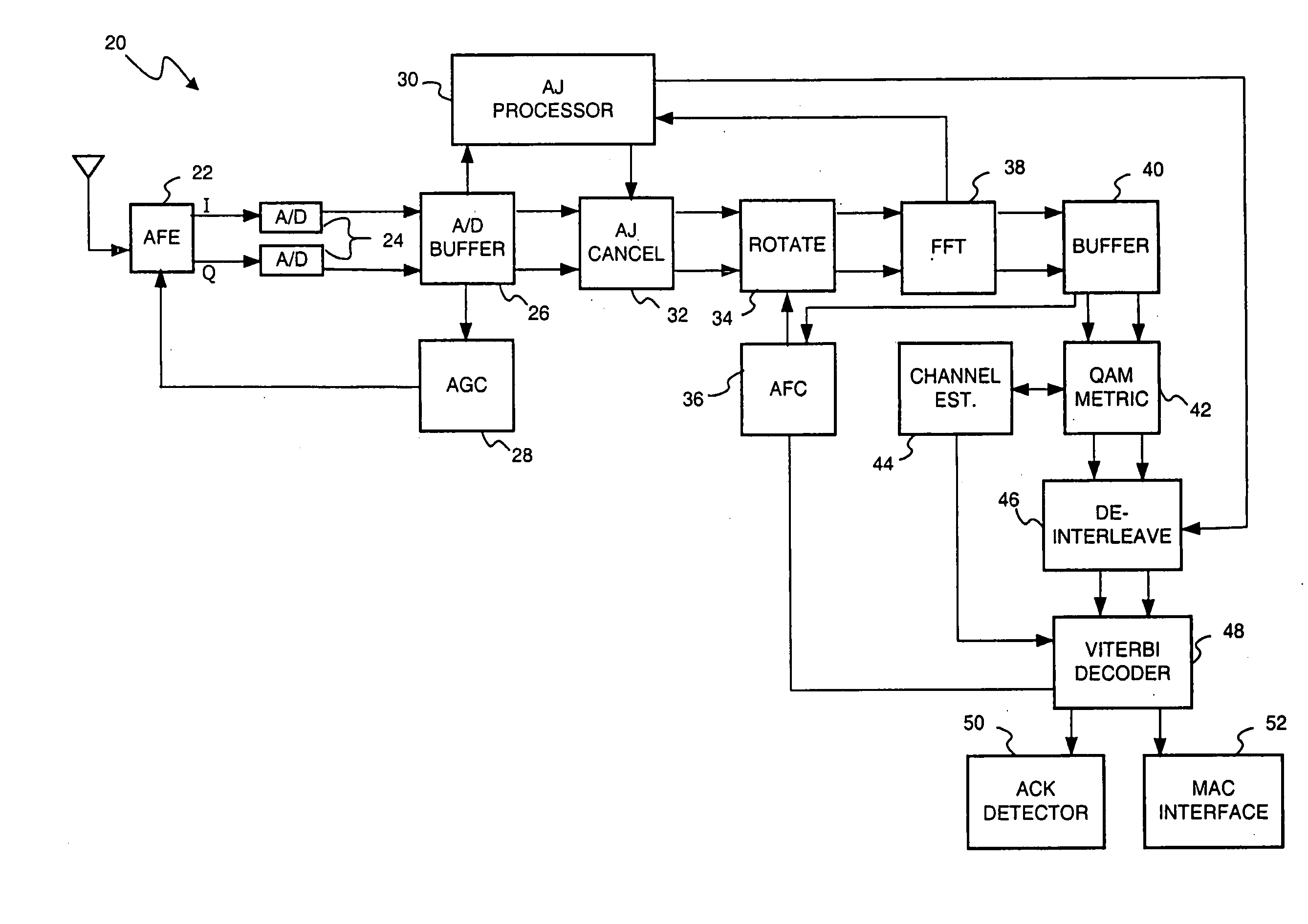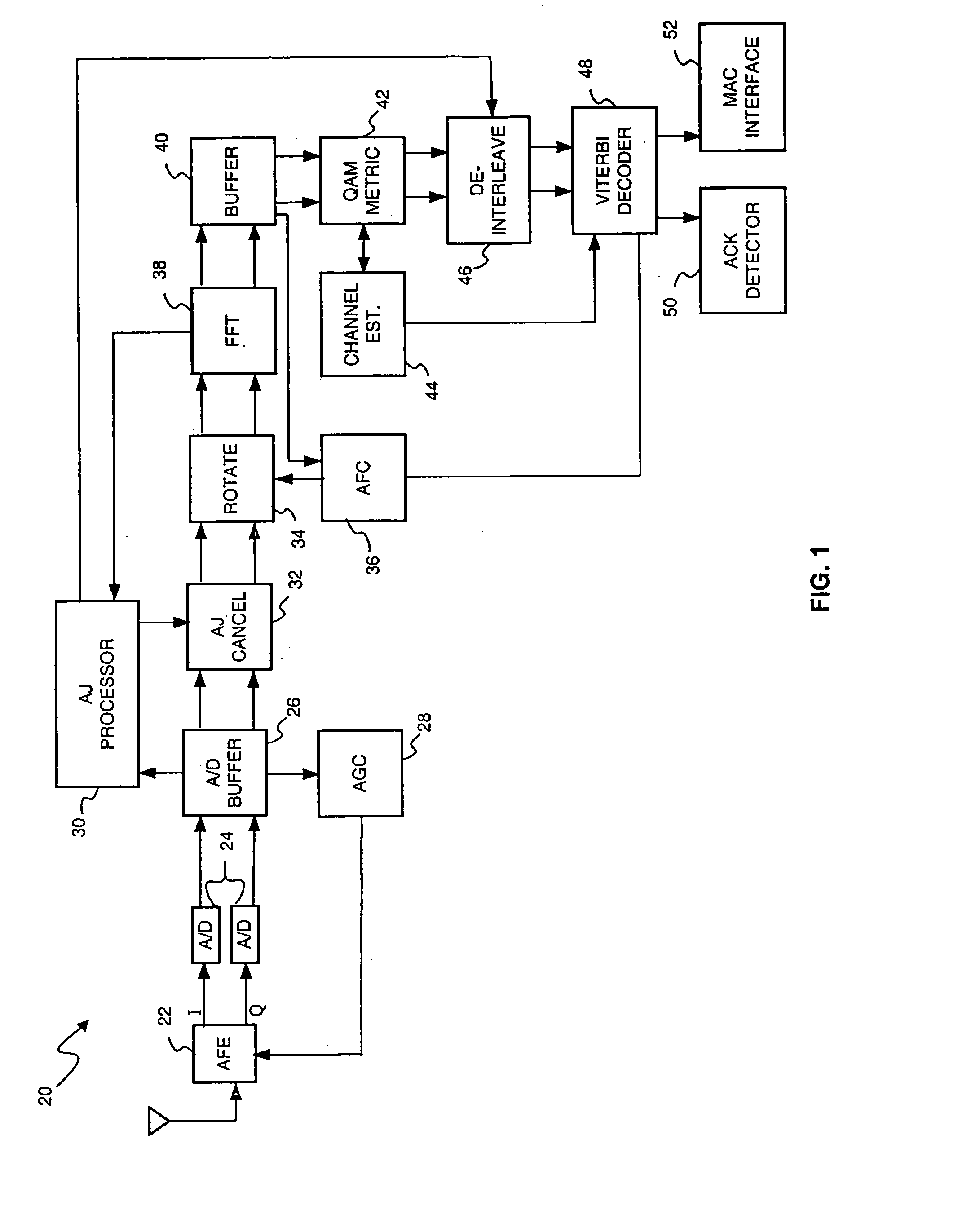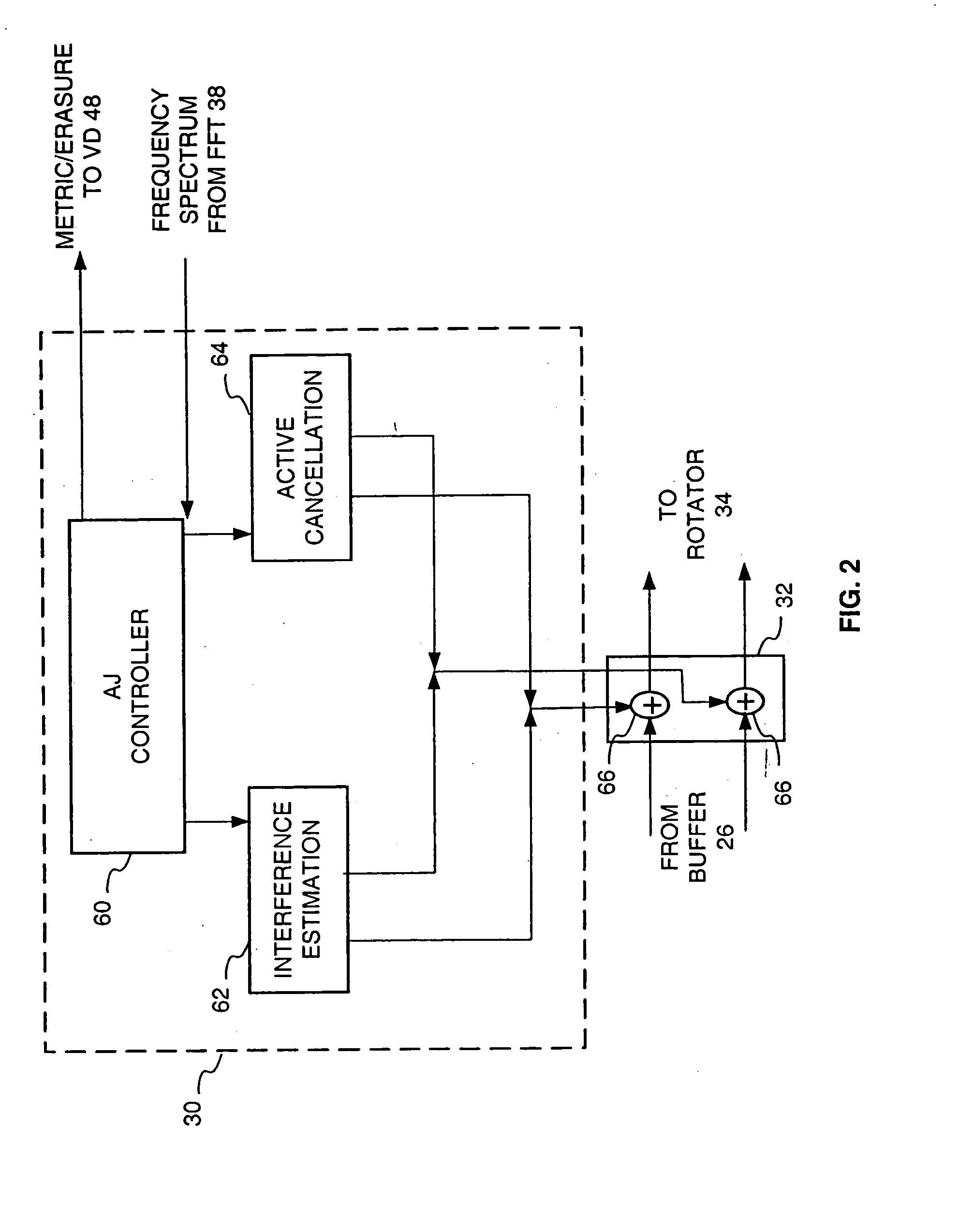Wireless receiver with anti-jamming
a receiver and wireless technology, applied in the field of wireless data communication networks, can solve the problems of slow convergence of adaptive filtering techniques, particularly problematic jamming, and sensitive wireless modems to unintentional jamming of high-power narrowband signals, so as to improve the anti-jamming performance of the transmitter/receiver pair, accurate estimation of transitions and other parameters of the jamming signal
- Summary
- Abstract
- Description
- Claims
- Application Information
AI Technical Summary
Benefits of technology
Problems solved by technology
Method used
Image
Examples
Embodiment Construction
[0029]FIG. 1 is a block diagram that schematically illustrates a wireless receiver 20, in accordance with an exemplary embodiment of the present invention. In the description that follows, receiver 20 is assumed to be part of a modem used in a wireless LAN (WLAN), operating in accordance with an COFDM modulation scheme. Exemplary schemes of this sort are those put forth by IEEE standard 802.11a, including Annex G of the standard, as noted in the Background of the Invention. The WLAN environment is assumed to be noisy and, in particular, subject to jamming interference from a variety of possible sources, such as signals generated by Bluetooth transmitters. Although the elements of receiver 20 are shown and described in terms of separate functional blocks, it will be apparent to those skilled in the art that many or even all of these blocks may be implemented in a single integrated circuit chip or in a set of such chips. Additionally or alternatively, the digital processing functions ...
PUM
 Login to View More
Login to View More Abstract
Description
Claims
Application Information
 Login to View More
Login to View More - R&D
- Intellectual Property
- Life Sciences
- Materials
- Tech Scout
- Unparalleled Data Quality
- Higher Quality Content
- 60% Fewer Hallucinations
Browse by: Latest US Patents, China's latest patents, Technical Efficacy Thesaurus, Application Domain, Technology Topic, Popular Technical Reports.
© 2025 PatSnap. All rights reserved.Legal|Privacy policy|Modern Slavery Act Transparency Statement|Sitemap|About US| Contact US: help@patsnap.com



